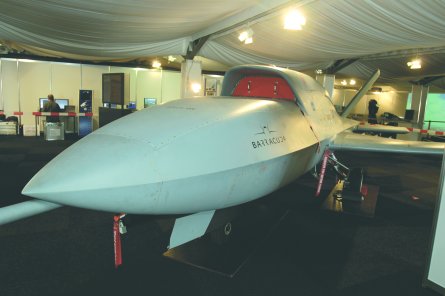 |
EADS plans to use its Barracuda high-speed unmanned air vehicle demonstrator as the basis of a modular family of aircraft that could be produced rapidly to support alternative missions.
The company is discussing a medium-altitude long-endurance (MALE) version with the German defence ministry as one of four contenders for a reconnaissance capability to replace the air force‘s Panavia Tornados from 2009.
The head of EADS Military Aircraft, Johann Heitzmann, says the modular approach is being pursued because of a blurring of boundaries between high-altitude, medium-altitude and advanced tactical UAVs being driven by “customer experiences”.
The German federal office of defence procurement announced at ILA that reconnaissance Torna-do replacement studies will be focused on the General Atomics Aeronautical Systems Predator B, Bell Helicopter Eagle Eye tiltrotor and EADS Euromale, as well as a MALE derivative of the Barracuda.
Eagle Eye has been included in the studies to examine whether a common UAV-based surveillance and reconnaissance capability could be developed for both the German air force and navy.
“We are in talks with customers to have variants – further developments of Barracuda that could fulfil different requirements,” says Heitzmann. “There is one possibility of changing the wing, but there are other ideas as well.”
He says other variants might include a land-based maritime surveillance derivative, but armed versions are unlikely for some time. EADS is not in a position to proceed with a full unmanned combat air vehicle development effort, which would require a wider European initiative.
Although the German government has partially funded development of the Barracuda, work on other variants would have to be self-funded by EADS.
A MALE Barracuda derivative could provide the basis of a common European approach to meeting requirements currently being chased by the Euromale programme, says Heitzmann.
Barracuda variants would use a common fuselage, but any production aircraft are likely to feature changes to the propulsion system to improve power for sensors. The demonstrator uses a single Pratt & Whitney Canada JT15D-5C turbofan, but twin-engine versions are being studied. The all-composite Barracuda demonstrator flew for the first time in April.
Source: Flight International
















